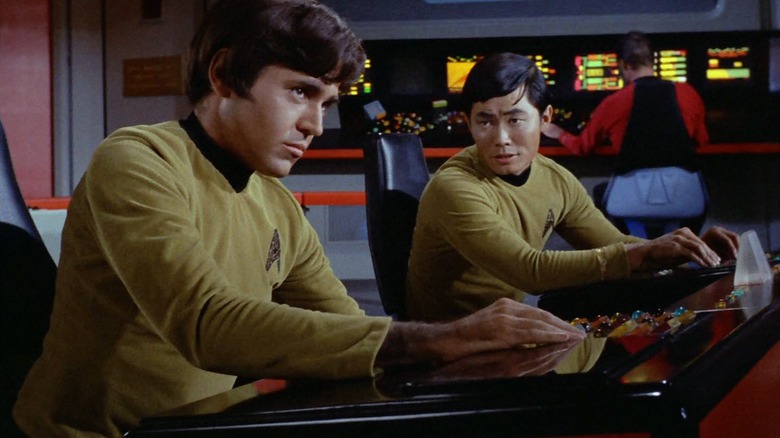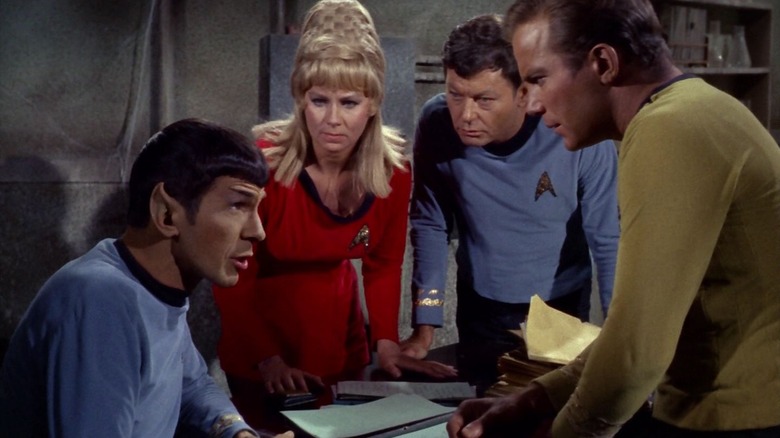Paramount
While the universe of “Star Trek,” conceptualized by Gene Roddenberry, may showcase a post-capitalist paradise where the pursuit of wealth is obsolete, the reality for its actors is far from this utopian dream.
Die-hard fans or “Trekkies” will confirm that “Star Trek” didn’t take off immediately during its original run from 1966 to 1969. Although it garnered a small yet devoted fan base, it never reached the top-tier ratings. The show was saved from cancellation once by a fervent letter-writing campaign. Its rise to cultural significance didn’t occur until reruns in the mid-1970s brought it to a wider audience, sparking conventions and an era of “Star Trek” superfandom. Roddenberry, attending these conventions, revisited the show under the impetus of fans, recognizing the utopian narrative he had crafted.
The original cast members of “Star Trek” capitalized on their modest show earnings by making appearances at conventions, as they did not receive residual income. Despite seeming unjust, the original cast — William Shatner, Leonard Nimoy, Nichelle Nichols, DeForest Kelley, George Takei, Walter Keonig, and James Doohan — were not paid royalties for the reruns in the 1970s. In a 1979 interview with the Fort Worth Star-Telegram, Doohan revealed that neither he nor his co-stars received any residuals from “Star Trek” reruns after 1971. Similarly, Shatner stated on Twitter in 2020 that he didn’t receive any “Star Trek”-related royalties prior to 1973.
The common assumption that all TV stars earned a lavish living purely from residuals for infinite reruns should be revisited. Many of them were deprived of such residuals due to unjust contracts.
Actors received no residuals post early 1970s

Paramount
In a Twitter spat, Shatner found himself defending his personal wealth against a disgruntled fan. He highlighted that the late 1960s were a challenging time for working actors as the expected structure of royalty payments hadn’t yet become an industry norm. He stated:
“Anything before 1973 (that includes ‘Star Trek’ Original Series) doesn’t pay a cent in royalties. So please don’t think you own me or I owe you something for watching. It doesn’t work like that.”
Shatner also discussed his lack of royalty payments on the Transporter Room 3 podcast, hosted by IGN. He clarified that during those times, no actor on any TV series received residuals for reruns after a few years. The general assumption was that no TV show would continue to air in reruns for more than a few years. Therefore, studios didn’t bother to draft any royalty-based contracts for actors. No one foresaw that “Star Trek” would secure a long-term syndication deal, keeping it on air for decades.
In the aforementioned interview with the Fort Worth Star Telegram, Doohan stated that the inequitable payments for the “Star Trek” cast spurred a contract restructuring movement in Hollywood. He explained, “Our situation was what prompted the Screen Actors Guild to change the rules. […] Now, you get paid for all reruns.” This happened after just three years on air.
SAG’s own website states that royalty payments did not exist before 1960. A successful strike led to the introduction of royalty contracts. However, retroactive payments were not included in the negotiations, and studios were not required to pay royalties to actors in movies released before 1960. Residual payments were included in contracts for anything produced in 1960 and beyond.
A Quick Overview of Residuals

Paramount
In 1960, SAG also established a pension fund. Yet, for the next 14 years, TV stars were still cheated out of their fair share. “Reruns” were a novel concept that studios seemingly chose to ignore when it came to paying royalties to their actors. In line with Doohan’s and Shatner’s comments, SAG “jointly negotiated the contract covering primetime dramatic programming on the major television networks for the first time” in 1974.
In 1980, entertainment unions went on strike again when studios attempted to withhold royalties from home video sales and pay TV like cable. You’ll notice that most SAG or WGA strikes throughout history have centered around the withholding of residuals. The union’s longest strike occurred in 1988, largely due to the non-payment of residuals for TV broadcasts in international markets. In 2007 and 2008, the unions struck again when studios neglected to pay residuals for online broadcasts. Studios seem to view every new technology as an opportunity to cheat SAG members.
This was particularly true during the 2023 strikes, which aimed to secure residuals from the infamous Streaming Wars. Streaming services, following a precedent set by Netflix, never disclosed their viewership numbers and felt no obligation to pay royalties to actors. The unions managed to negotiate a payment system and also demanded that studios stop using A.I. technology to scan their faces and use their images for free. The 2023 strikes were the second-longest in the organization’s history, by just one day.
Fortunately, the “Star Trek: The Next Generation” cast benefitted from these earlier strikes and have been living off residuals. In the case of actor Wil Wheaton, who played Wesley Crusher, it was his sole income for years.
Credit: www.slashfilm.com


